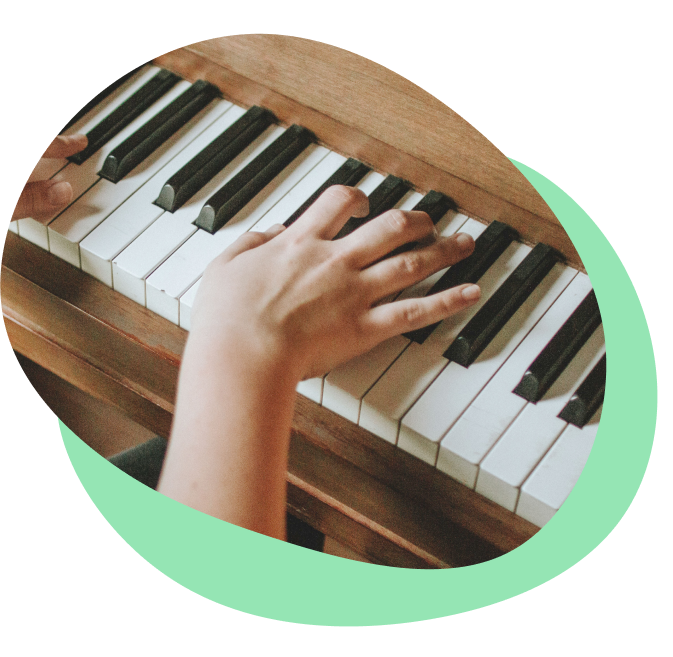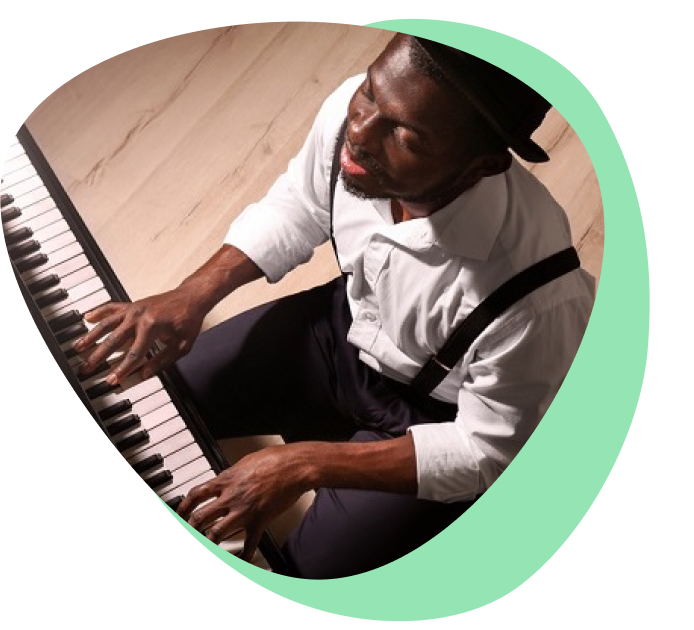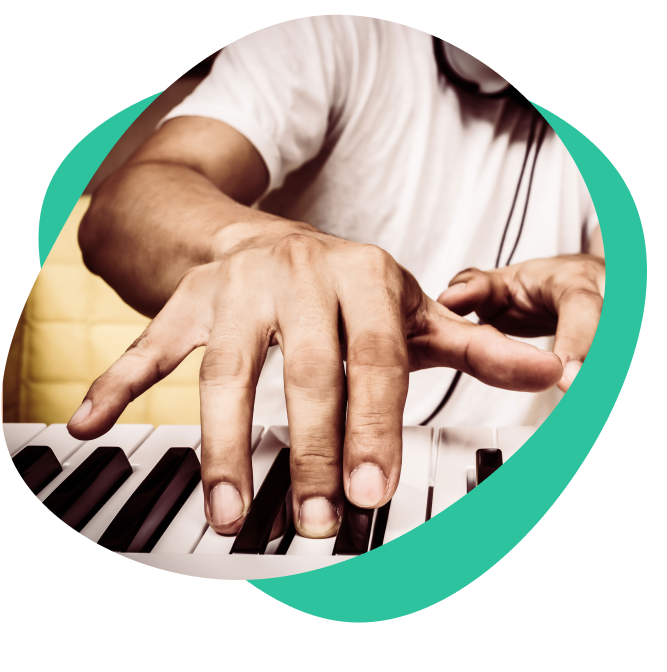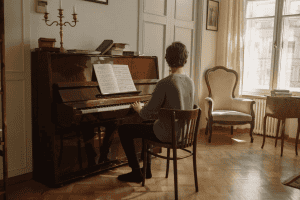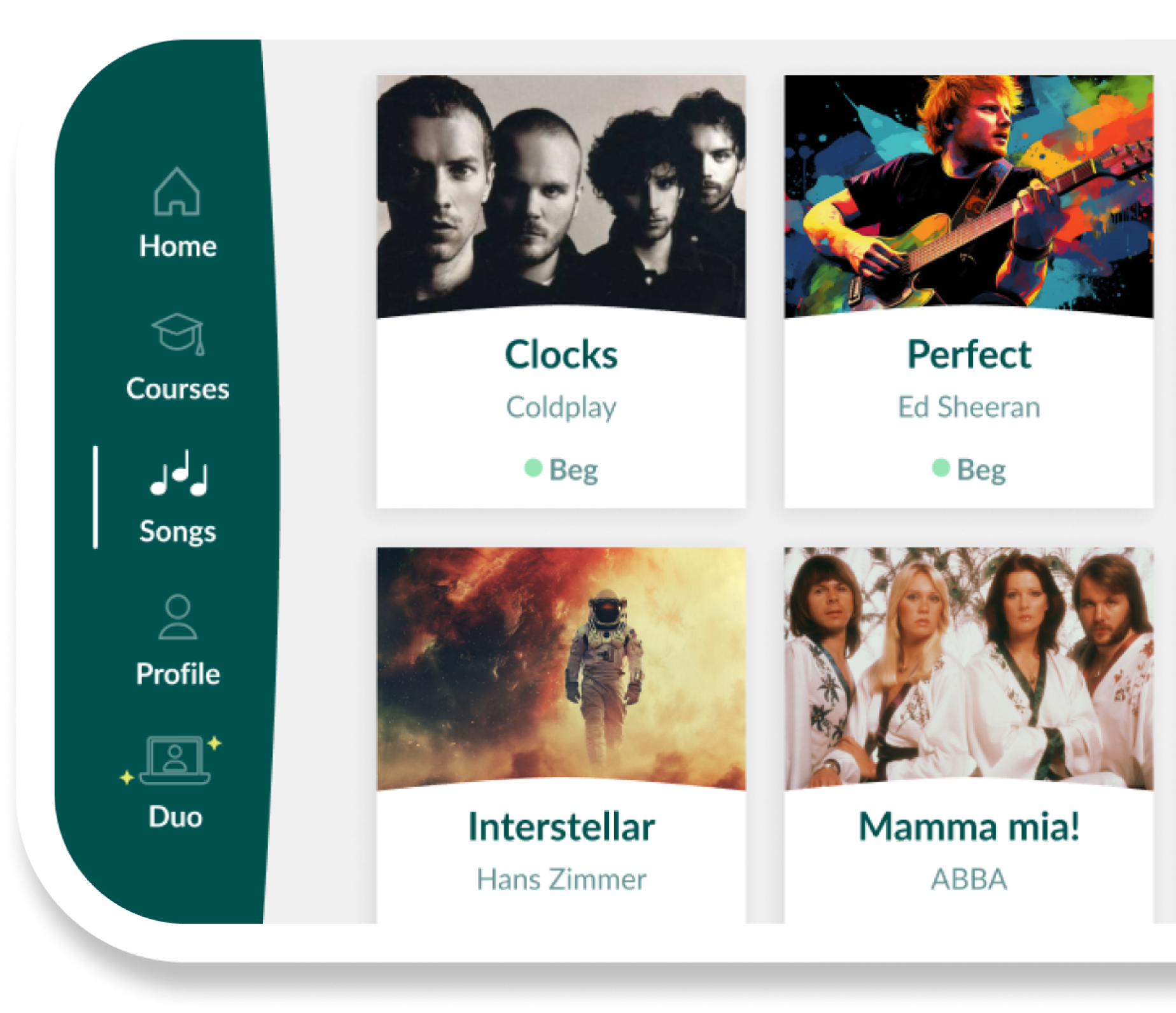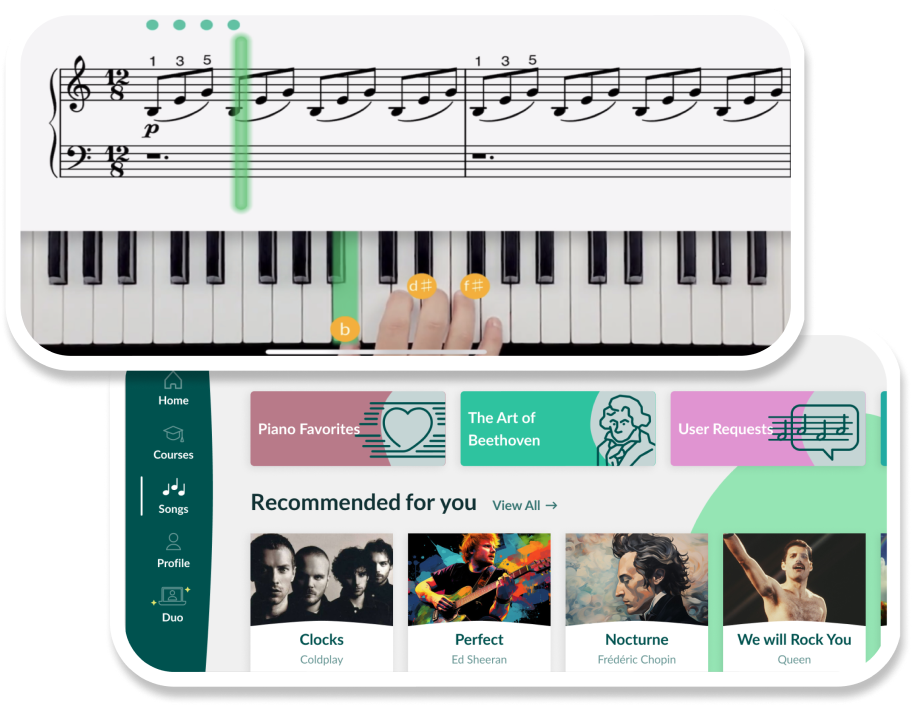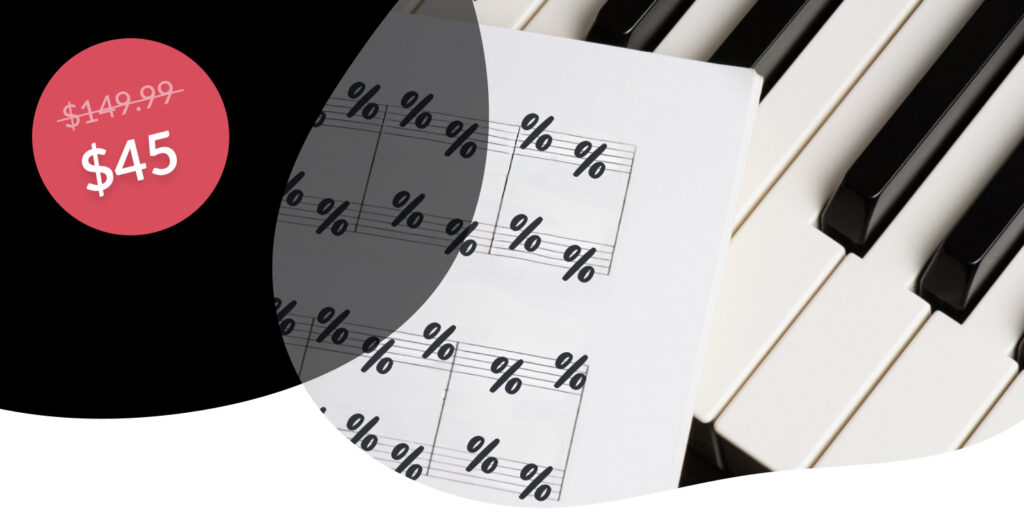
Do you know?
Leonard Cohen worked on “Hallelujah” for almost five years, writing and rewriting the lyrics over and over again. It’s said that he drafted anywhere from 80 to 180 different verses before finally choosing the version that made it onto the album.
If you’ve ever wanted to know how to play “Hallelujah” on piano you’re in the right place, this guide will walk you through it step by step. With just a few simple chords and notes, you’ll soon be able to play this piano song with confidence.
With Skoove’s “Hallelujah” piano tutorial guiding the way, you’ll move through each section at a comfortable pace, with clear explanations and practical tips that make learning feel natural. Let’s get started!
“Hallelujah” piano notes and finger positions
In this tutorial, “Hallelujah” is played in the key of G♭ major. This means you’ll use a mix of both white and black keys.
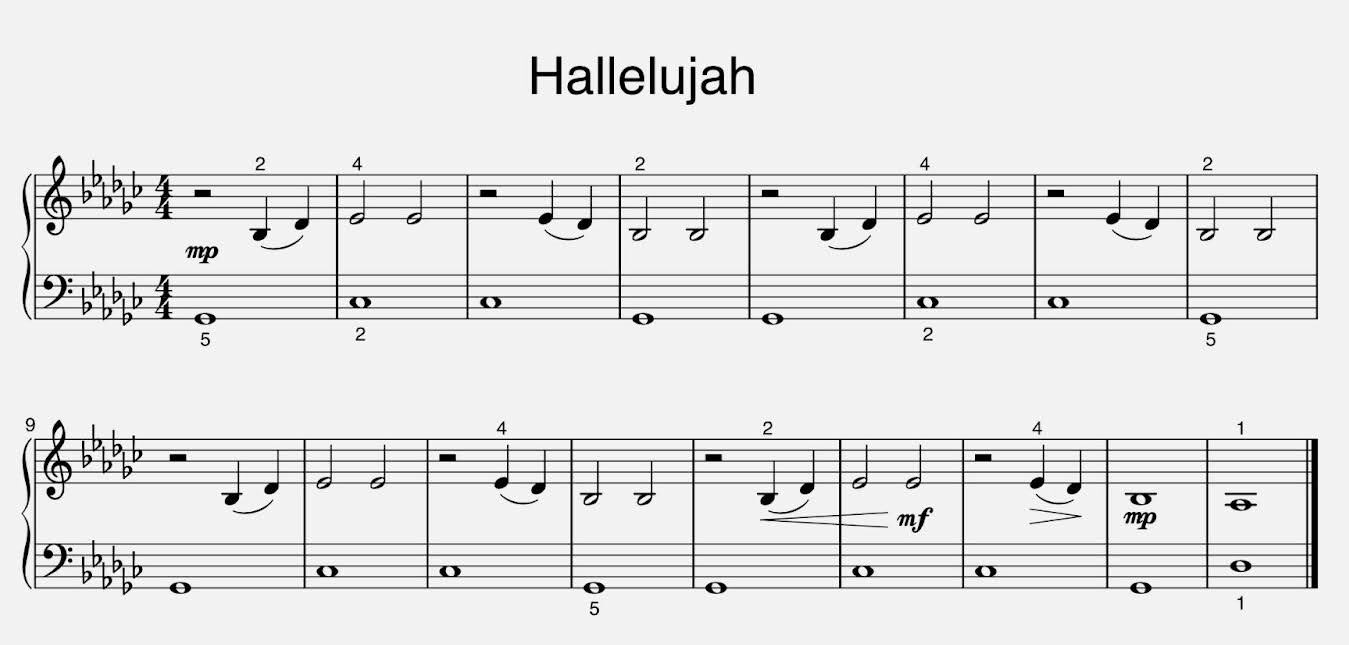
Let’s break it down hand by hand.
“Hallelujah” piano notes in the right hand
Place your thumb (finger 1) on A♭ and let your fingers rest naturally on the next keys: B♭ (2), D♭ (3), and E♭ (4). These five notes make up almost the entire melody.
The opening phrase goes like this:
B♭ (2) – D♭ (3) – E♭ (4) – E♭ (4) – E♭ (4) – D♭ (3) – B♭ (2)- B♭ (2)
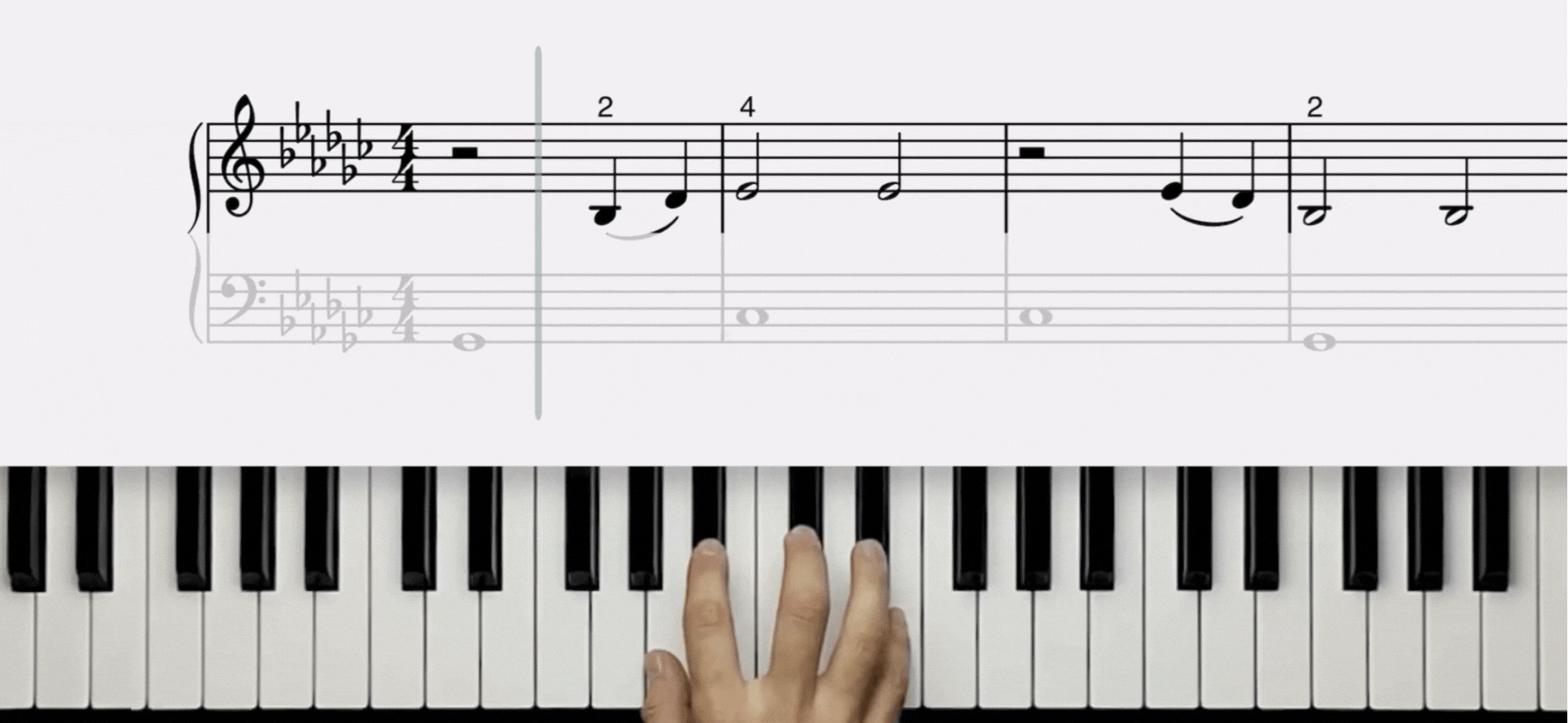
Play this slowly but in time with your right hand until it feels smooth. This line is repeated in different variations throughout the song, so mastering it will make the coming phrases much easier.
“Hallelujah” piano notes in the left hand
While your right hand carries the melody, the left hand plays the harmony. To keep things simple, start with just the root notes of the chords. Place your pinky (finger 5) on G♭ below middle C and let the rest of your fingers fall naturally across the next notes. The main notes you’ll use in this bassline are:
G♭(5) – C(2) – C (2) – G♭(5) – G♭(5)
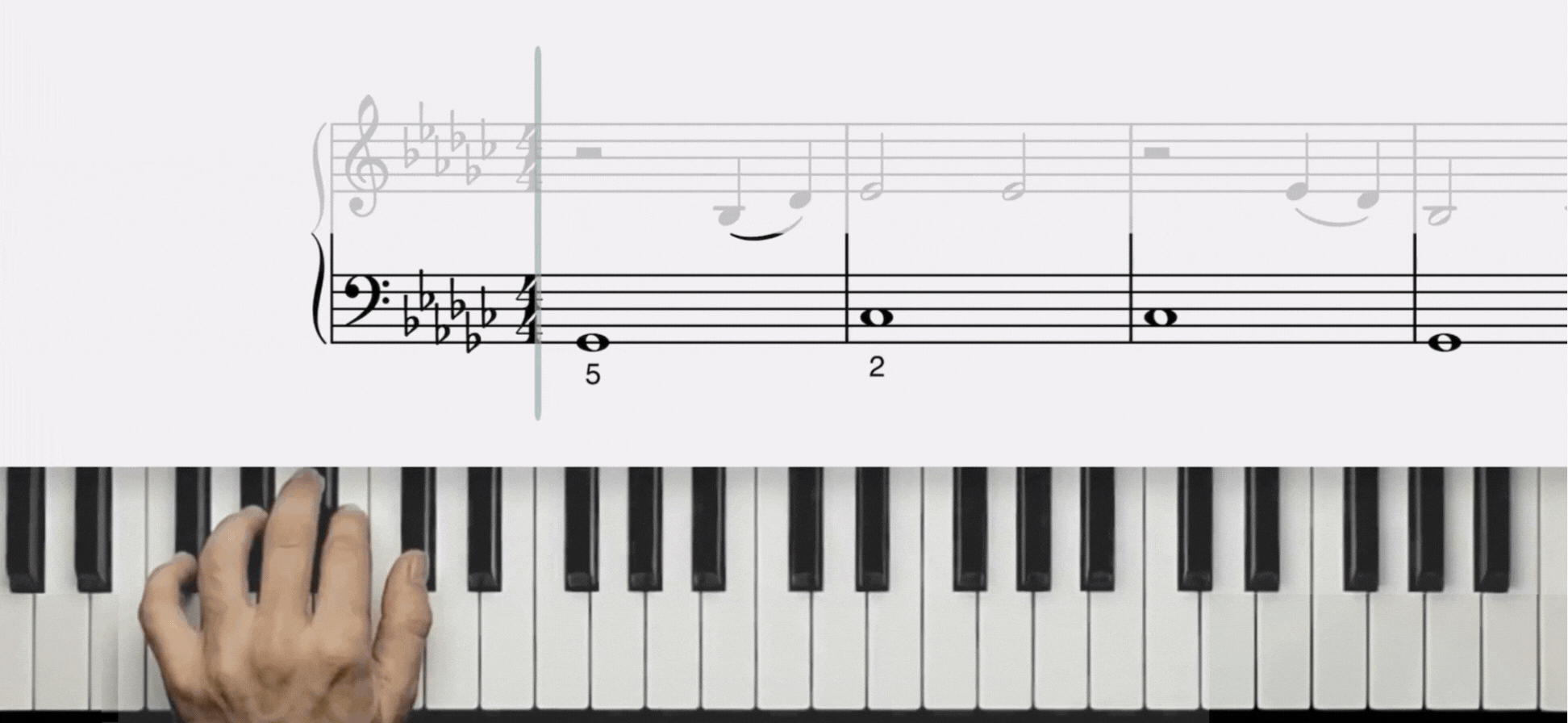
You can play the left hand notes alone at first as you get used to it. Press one bass note at the start of each phrase and let it ring while the melody is going by paying attention to synchronization. Even this simple version will already sound like “Hallelujah”.
How to play “Hallelujah” on piano?
Now that you’ve learned the notes and hand positions, it’s time to bring everything together. Playing the “Hallelujah” piano chords with both hands might feel tricky at first, however with a slow tempo and steady practice, the melody and harmony will start to flow naturally. In this video from Skoove, you’ll learn exactly how to place your hands, which notes to press and how to bring the chords and melody together. You’ll see finger positions in real time and hear how each part should sound, making it much easier.
“Hallelujah” practice tips
Here are some great tips and things to remember when you’re starting out learning how to play “Hallelujah” on piano.
- The song is in the key of G♭ major, so you’ll use both white and black keys. Don’t worry, the melody stays close under your fingers.
- Begin by practicing the right-hand melody on its own. Once that feels smooth, move to the left-hand bass notes. Only combine them when both hands feel comfortable and are in time.
- If you’re a beginner, you don’t need to play full chords yet. The left hand can stick to single bass notes, while more advanced players can add the full triads for extra richness.
- Use your muscle memory to internalise short phrases in the right hand so you don’t need to look down constantly. This will free your eyes and help you focus on timing.
- Keep a steady count of 1 – 2 – 3 – 4 as you play to keep the rhythms in time. This will make your performance sound confident and smooth.
With these simple habits, you’ll build confidence quickly and “Hallelujah” will start sounding smooth under your fingers.
Ready to play more?
From the first notes to combining both hands, you now have the foundation to play Leonard Cohen’s “Hallelujah” piano music with confidence. Even if you’re still working through a single verse or chorus, every practice session brings you closer to making the music flow naturally.
This is only the beginning. Inside the Skoove app, you’ll find other interactive lessons where you can practice with real-time feedback, adjustable speed and backing tracks. Well done and keep up the practice!
Author of this blog post:
Matthew Dickman

With over a decade of experience in music education Matthew holds a BA in Music from Paul McCartney’s LIPA and an MA in Composition from the University of Salford. Mathew has developed a distinctive compositional voice and approach to music theory education through his research and work in the music industry. Matthew’s writing for Skoove combines experience from orchestral and media composition, and as a gigging jazz musician, to create a wholistic and accessible pedagogy for musicians of any level. Away from music, he enjoys reading and exploring nature to expand his horizons and knowledge contributing to his holistic teaching style.




